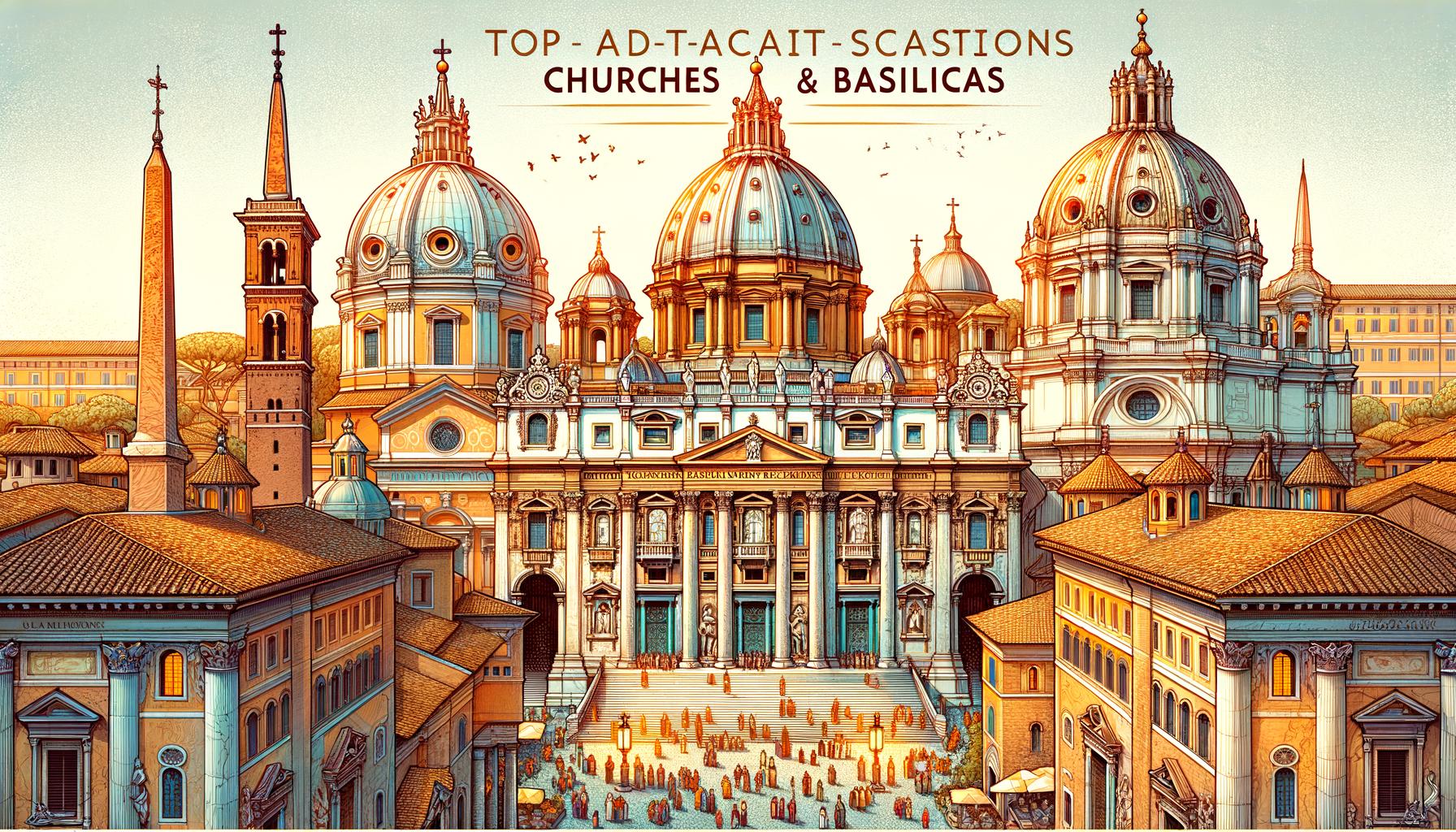
Top Attractions
Churches and Basilicas
The Basilica of Santa Maria Maggiore is an ancient Catholic basilica that is considered to be the largest of the churches dedicated to the Virgin Mary in Rome. It is one of the city’s four major basilicas. Built on a pagan temple dedicated to the goddess Cybele in the mid-fourth century under the orders of Pope Liberius, the basilica has had many different names over the years, such as Saint Mary of the Snow, Santa Maria Liberiana, St. Mary of the Nativity, and finally called Santa Maria Maggiore.
Inside
The basilica displays varied architectural styles, from early Christian to Baroque. Despite the restoration and renovation during the eighteenth century, the church retains the bell tower, some mosaics and marble floors from the medieval period and some Ionic columns from other ancient Roman buildings, as well as splendid fifth-century mosaics. The ceiling decoration has been preserved from the Renaissance period, while the domes and chapels belong to the Baroque era.
A successful mix of styles
Probably the most striking aspect of the Basilica Santa Maria Maggiore is the different parts belonging to such varied periods of history. As if it were made up of remnants, the church summarizes the most important stages of Christian art in Rome.
Location and Schedule
Location: Piazza di Santa María Maggiore Schedule: Every day from 7 am – 6:30 pm Price: Adults - €3, Students and over 65s - €2
How to get there
Transport: Metro - Termini, lines A and B Buses - 16, 70, 71 and 714
Nearby places
- National Roman Museum (375 m)
- Rome Termini Railway Station (412 m)
- Piazza della Repubblica (562 m)
- Santa Maria degli Angeli e dei Martiri (567 m)
- Baths of Diocletian (592 m)
You may also be interested in
- Basilica of St. John Lateran
- Basilica di San Clemente
